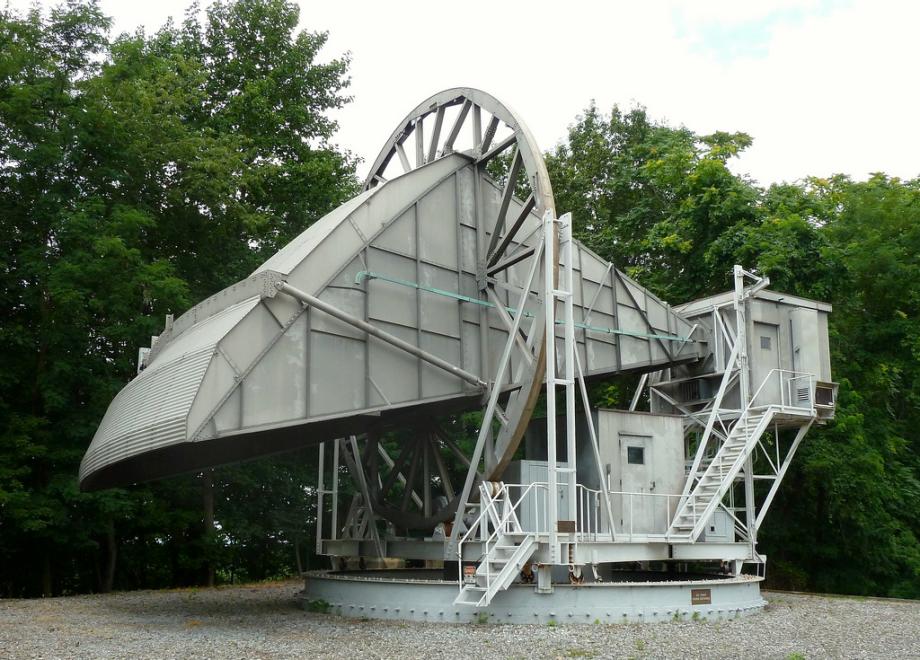How an Antenna in New Jersey Changed Our Understanding of the Universe
In the 1950s, the scientific community was split by two competing theories explaining the origin of the universe. On one side, adherents of the Steady State Theory believed that the universe was static and would remain forever unchanged. In these theorists' minds, the universe had always existed in its current state.
Opponents of this explanation favored a more controversial history of the universe, known as the Big Bang. This theory, supported most notably by Georges Lemaître and George Gamow, suggested that the universe began with a cataclysmic explosion billions of years ago. In this scenario, the universe existed in an infinitely dense and infinitely hot state before the Big Bang caused its rapid expansion.
Though Edwin Hubble's observations of receding galaxies in 1929 supported the notion of an expanding universe, no definitive evidence of the Big Bang existed until Arno Penzias and Robert Wilson pointed the Holmdel Horn Antenna to the sky. Penzias and Wilson, a pair of radio astronomers working at Bell Telephone Laboratories, first gained access to the instrument after advances in satellite technology made in 1962.
The antenna was originally built in 1959 to support NASA's Project Echo, which bounced radio waves off metallic balloon satellites in order to transmit signals from one part of the globe to another. A few years later, the antenna's sensitivity was increased in order to detect faint signals from Telstar, the first communications satellite capable of collecting, transmitting, and relaying signals rather than simply reflecting them.
With its high sensitivity and horn shape, which allowed for precise pointing, the antenna was ideal for conducting radio astronomy observations. This fact was immediately recognized by Penzias and Wilson, who began using the telescope to study emissions from the Milky Way. The astronomers soon became bogged down, however, by a mysterious background noise that was present wherever the instrument was pointed.
Penzias and Wilson made every attempt to explain the troublesome 'static.' They pointed the antenna towards New York City to check if humans were responsible. They even spent hours removing bird excrement (or as Penzias called it, "white dielectric material") from the horn where pigeons were roosting. After all of their tests, the two men concluded that the noise was not coming from the Earth, the Sun, or the Milky Way. The only remaining explanation was that the source was outside of our own galaxy.
At the same time, a team of Princeton astrophysicists led by Robert Dicke was preparing a paper on the possibility of detecting leftover microwave radiation from the Big Bang. Although the energy released by the Big Bang would have been unfathomably high, Dicke’s team reasoned that the universe’s subsequent expansion would have shifted this radiation into the relatively low-energy radio regime. Upon hearing about the Princeton researcher’s work, Penzias and Wilson began to realize the significance of their mysterious background noise. The researchers contacted Dicke, who sent them a copy of the unpublished paper and was then invited to Holmdel to listen to the noise.
During Dicke's visit, the scientists agreed that they had stumbled upon the cosmic microwave background radiation, the theorized remnants of the Big Bang. Dicke informed his team, "We've been scooped," and in an act of scientific solidarity the two groups decided to publish their results jointly.
The scientific community immediately recognized the importance of such a discovery and in 1978 Penzias and Wilson were awarded the Nobel Prize in physics. Harvard physicist and Nobel Laureate, Edward Purcell, even said of the finding, "It just may be the most important thing anybody has ever seen." Aside from the implications for science and humankind in general, the discovery was also particularly important for cosmology: it represented a shift in the field from mostly theoretical work to the practice of direct observation.
Today, the Horn Antenna is a National Historic Landmark. Located just a few miles from Bell Laboratories, the 20-foot aluminum antenna is no longer in use and is open to the public. Though the entire apparatus weighs 18 tons, a force of only 100 pounds is sufficient to rotate the antenna along the horizontal axis. To ensure the instrument's safety, it was designed to withstand 100 mph winds and to rotate freely when not in use, allowing it to settle in a position of minimum wind resistance.
- Twenty-seven massive radio antennae on the high plains of New Mexico search for life on other planets
- The Berlin Radio Tower or "Berliner Funkturm" has a restaurant and an open-air observation deck
- To disguise a TV antenna, Oxford resident Bill Heine had a twenty-six foot shark sculpture erected on his roof

